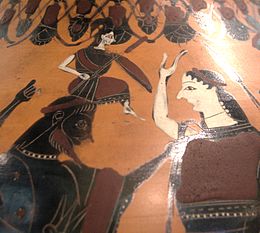Yesterday I had an experiment about starch in the leaves. The resource was from my Science Checkpoint textbook.
Materials:
- Bunsen Burner
- Beaker
- Forcep
- Leaves (Tanjung leaves)
- Test Tube
- Ethanol
- Plate
- Pincers
Variable:
- Controlled variable: the time used for boiling the leaf
- Independent variable: the bread and the pineapple
- Dependent variable: the starch in the leaf
Steps:
1. Boil a beaker of water on a Bunsen burner.
2. Put the leaves into the boiling water into the beaker. This is to break the membrane that protect the startch.
3. After a few minutes, take out the leaves and put them on a plate. Turn off the bunsen burner.
4. Fill the test tube with ethanol.
5. Put the boiled leaves into the test tube. Put the test tube into the hot water in the beaker. Then wait until the green colour from the chlorophyll goes out into the water. The ethanol will boil in the hot water
6. Once you think most of the chlorophyll goes out, take the test tube from the hot water of the beaker, then pour out the water. We have to drain out the chlorophyll to make us easier in checking the colour changing.
7. Take the leaves out, then dip the leaves back into the water in the beaker. This is to soften it.
8. After that drip some iodine over it to see if there's startch in it. If it turns blue black, then it means that part has startch in it. This can be tricky, because not all plants keep their startch in the leaf. And also, for some leaves, if you put it into the water again, the startch might be washed awaye.
These are the materials. The pineapple and bread are the parameter colour (bread for starch and pineapple for non starch)
Dripping betadine into the pineapple and bread. We don't have iodine, so we use betadine, as betadine has more than enough iodine.
See? The bread shows black colour, means that was consisted of starch, but the pineapple still shows the betadine colour, because pineapple doesn't have any startch.
The first trial:
First I fill the beaker with water, then turn on the Bunsen burner, puting the beaker on top on it.
Putting the leaves into the boiled water in the bunsen burner, then taking it out after a few minutes, after that I put the leaves onto the plate.

1. Filling the test tube with ethanol
2. Putting the leaves into the test tube.
3. Putting the test tube into the beaker of hot water, then taking it out again.
This is the closer look of how it looked like. The water is starting to become green.

Pour the water filled with chlorophyll out into a container, then I take out the leaves from the test tube and put it back into the boiling water in the beaker.
Putting back the leaves into the beaker.
After I dripped the betadine onto the leaf,it didn't show any colour change, because the membrane is still too strong and blocks the startch from showing itself. We need to boil it much longer.
Conclusion: We fail for the first attempt because the leaf's membrane from this leaf is too strong, and we don't boil it long enough. The boiling process in ethanol also failed in draining the chlorophyl out (we can see the leaf was so green instead of yellow or pale green).
We have to redo the experiment.

























































